Top new tips for Megdaz and the Tassaout Valley: your #1 tourist guide
The Tassaout Valley takes its name from the Tassaout River and is considered among the most beautiful valleys in Morocco. It is also called the Red Valley due to the ochre color of the surrounding mountains.
The road trip started with Demnat, Iminifri, Ifoulou, Megdaz, up to Amezri and the Tassaout waterfalls
Sommaire
Imi Nifri
Imi Nifri Village and Natural Bridge
Before reaching the Tassaout valley, Imi Nifri is a small village famous for its natural stone bridge and waterfalls.
📍It is located 6km south of Demnate of the Azilal Province in the heart of the high Atlas mountains of Morocco.
🔍Imi Nifri in Amazigh means ‘Mouth of the cave’
🦅 The natural bridge of Iminifri is a refuge to numerous birds.
🔅It owes its creation to the collapse of an underground cave system formed by the river Assif Tissilt, which carved it into the limestone through erosion.
🌍 From the other side of the cave, nature has shaped the African continent as an opening to the other side.
Il est même devenu le logo du site.
🔁 The hike is a loop walk that passes under the natural bridge.
🅿️ 🚶 The starting point is a small foot trail near the parking that takes you directly down the stream of the cave. Once you pass the African Map opening you continue up towards the top of the arch.
🕰️ The hike takes less than one hour
🚕 From Demnate, you can find big taxies to Imi Nifri in Mohammed5 street near the bus and taxi terminal.
🚶♀️ Or alternatively set out on foot for the 1.30 hour max hike via a mountain road.
📣There are guides in the parking lot but they aren't necessary, as the steps down the gorge and back up to the parking are clearly visible.
💵 However,you might want to pay a small tip to a local guide to help you over some tricky boulders and tell you about local legends

Restaurant in Imi Nifri :
🥘I tried the restaurant called Espace Alakhawan.
The speciality is the famous bunny Tajine and it “Tebzira Demnatia”, a special mix of spices from this region of Demnate.
📞 I recommend you call the restaurant earlier to make sure they have the rabbit meat and order your tajine before you arrive.
Here the number +212677853136 Hicham.
🥗For vegans, there is this restaurant of Hassan known by the vegan Tajine and the tea with natural local herbs.
🥤 For juice, I tried this street fresh grenadine juice while climbing the stairs on our way back of the hike.
Tassaout valley
The Tassaout valley, one of the most beautiful valleys I’ve ever seen! The mixed of the colors is astonishing.
📍 The Tassaout valley takes its name from the Tassaout river and is located towards the source of the river on the Tarkeddit plateau at the foot of Mgoun mountain.
🔍It is an isolated valley sometimes nicknamed the “lost valley” for its difficult access or ‘the red valley’ for the ocher color of the surrounding mountains.
🏡Also known for its picturesque villages with ancestral Amazigh architecture such as Amezri, Ichebbaken, Ait Ali n’itto, Ifoulou and the famous Mgdaz.
📝 Tassaout the lost valley is part of the M’Goun Geopark. The “Global Geopark” label was awarded by UNESCO in 2014, for its rich and varied natural, geological, cultural and architectural heritage. With a development strategy based on sustainable tourism.
See more about the M’Goun Geopark in my other article here.
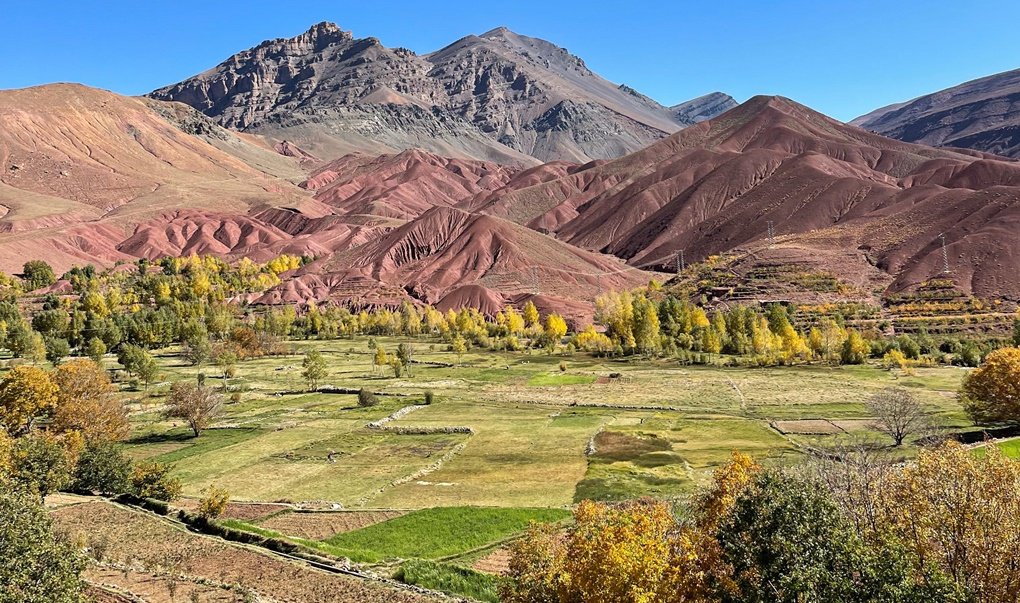
👨👩👧👦People of Tassaout Valley are are predominantly Amazigh.
🔍 Although the most majority of Moroccans including myself are originally Amazigh, the people living in the mountains remain fiercely attached to their traditions .
They preserved the language, music, dance, dress, culinary traditions, mores, lifestyle...
🏕️ They are an ethnically distinct tribal people who inhabited these mountains and deserts thousands of years before the Arab conquest brought the Arabic language and Islam in the seventh century A.D.
📜And even nowadays, the Amazigh people of the Atlas mountains still live in tribes which they call Douar. Each tribal community stick together and shares ancestry and distinct cultural practices.
🌟The Amazigh communities in the Tassaout Valley have a deep-rooted connection to the land and its history. They are primarily subsistence farmers, with additional income coming from herding animals, harvesting nuts and weaving carpets. Patterns are handed down from weaver to weaver within families, resulting in designs specific to certain lineages.
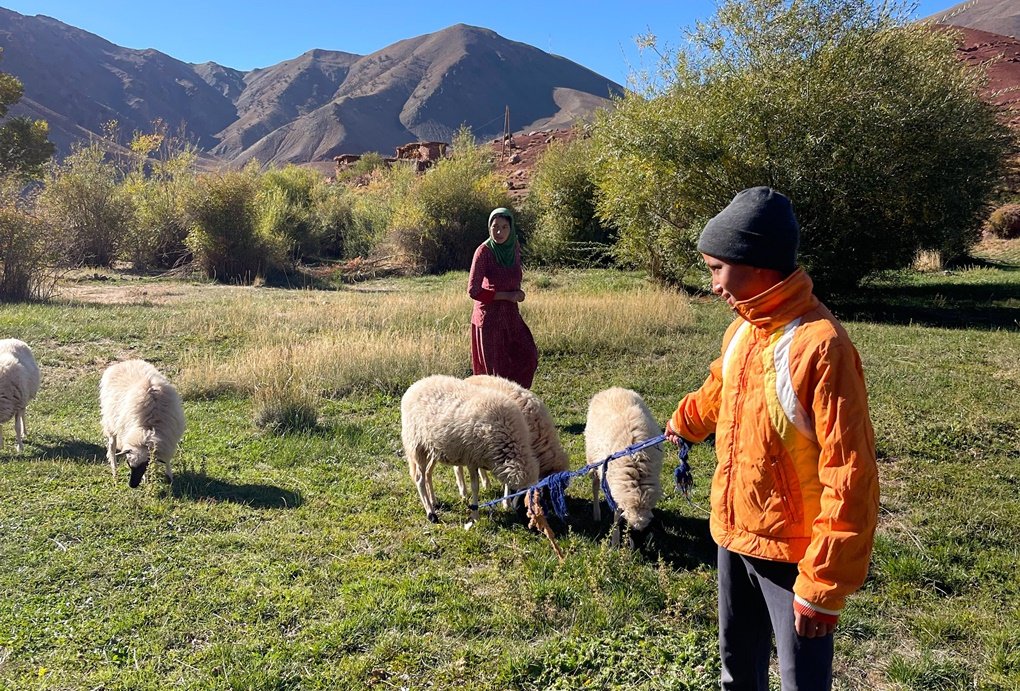
Ifoulou village
🏡Ifoulou Tassaout Cottage
Here’s a charming stopover cottage located in a still virgin area, the village of Ifoulou, region de Tadla-Azilal.
A pretty amazigh remote village perfect for disconnecting.
🚗 Accessible by car or public transport from the closest cities : Demnate or Ouarzazate via the R307 (road between these two cities.)
🛣️ The condition of the road is very good until the cottage. The house is couple of meters from the main road.
👨👩👦👦The property is operated by the family that lives in front of there.
🗣️They are multilingual. I was impressed how good they speak foreign languages such as Spanish, French, English..
🃏 The brothers Omar and Younes and their father were very welcoming, we felt at home. After dinner, We played cards with Younes. He showed us there own rules. It was fun.
🥞Breakfast is hearty with local food. The meals are prepared by the hosts.
Dinner was really delicious and various.
🚿 Hot shower, a luxury in the area
🛜For Digital nomads, the Wi-Fi connection is not the best and only works in common areas.
🌳 That didn’t bother me personally, It’s the perfect place to disconnect and reconnect with nature, locals, and your inner self.
☀️ Magnificent views from the terrace. It overlooks the valley and river of Tassaout surrounded by High Atlas mountains.
🛌 Comfortable bedding and warm duvet.
💰180dhs half-board (breakfast and dinner) and 230dhs full-board(3meals) per person
🥾A perfect starting point for outstanding hikes in the valley or for climbing several surrounding mountains... I’ll share all the activities possible from there in the following post.
🔊I highly recommend this place and hope to return soon. Thank you my friends !
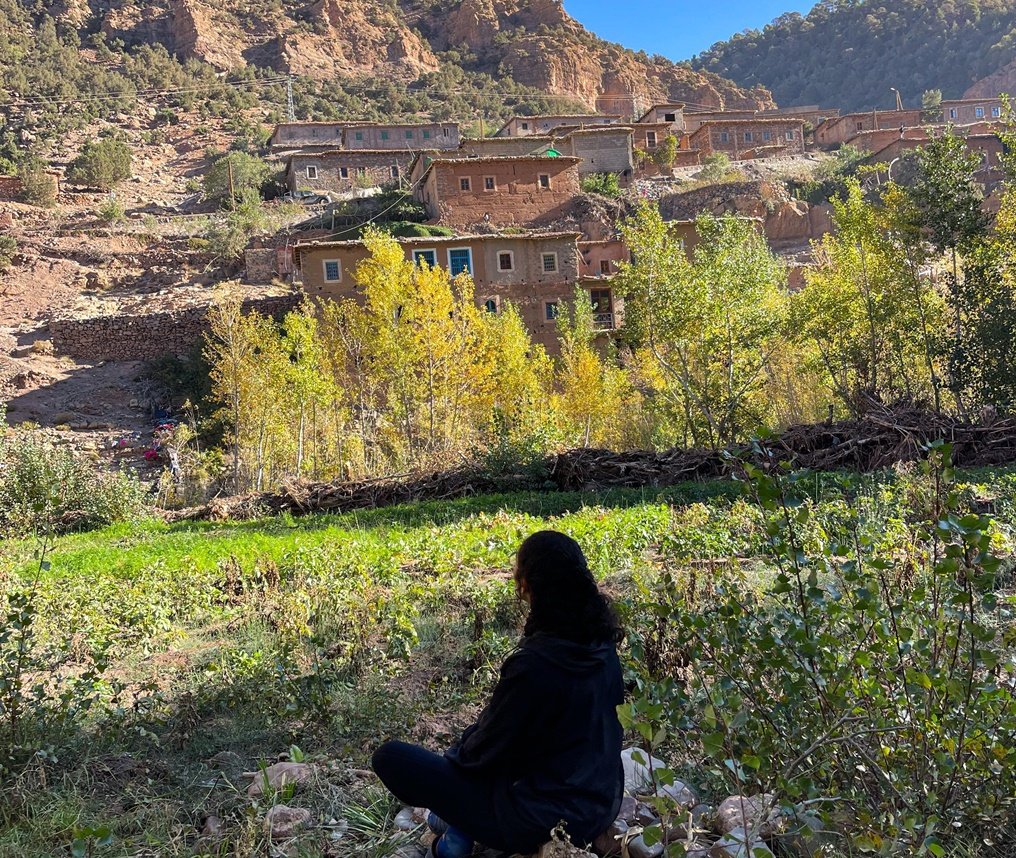
⛰️ Mountain peaks from Ifoulou:
- Summit Ifoulou (2170m) 4h
- Summit Tast 2000m 5h
- Summit Anghmer (3600) 3 days, two nights in bivouac (via Lake Tamda)
- Summit Rat (3800) 3 days, two nights in bivouac
📍Tassaout canyon
Brace yourself, I’m taking you to one of the most remote treasures in the region. Even the place is not baptized.
🏞️It’s about a canyon that goes along the river ‘Tassaout’ near Amezri town in the middle of nowhere literally!
🚗 How to get there?
Well, that’s the most complicated part. The road is extremely rough once you arrive to Ait Ali-n-ito. So you have 2 options :
- 🏕️ Hike from there until Amezri, then continue to the canyons until you arrive to the waterfalls. it’s 9h hike until Amezri. Then 1h30to to the canyons.
- 🚙 Use a 4*4 car. We personally booked a driver for the day. Younes from Gite Ifoulou gave us the contact. Younes phone : +212 6 58 32 16 76. It’s 3h by car . 📌The starting point was : Gite Ifoulou
😍The road is breathtaking!
It goes along the Tassaout valley. And trust me it’s one of the most beautiful valleys I’ve ever seen! The mixed of the colors is astonishing.
💚💛🤍🧡❤️💜💙🩵🩷
📸 You will pass through a picturesque village at the foot of the mountain called Ichbaken.
Feel free to take a break there and take pictures.
🫖 Once in Amezri, the people are so nice. Many have offered tea and free stay for the nights!
👩❤️💋👨The Amazigh hospitality has no limits, and it leaves my heart full everytime.
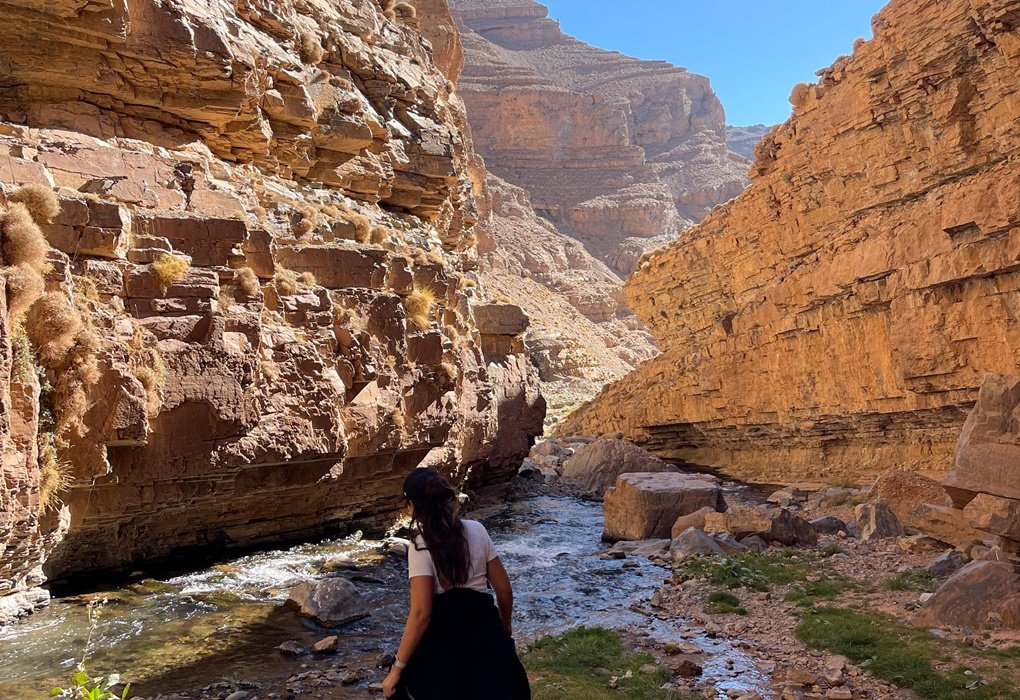
📍 Tassaout Waterfalls.
If you continue your hike in the Tassaout canyons toward the direction of Mgoun Mountain. You’ll end up in this mesmerising waterfall 🏞️😍

Megdaz village
📍Elected as the most beautiful Atlas village in Morocco, Megdaz is situated on the edge of the remote Tassaout Valley, nestled high against the mountains of the High Central Atlas (2100m above sea level).
🛣️ The road to Magdaz from Ifoulou has recently been paved but is not in very good condition. Therefore, it is passable by a slightly high car.
📜Here, it feels like time has stood still for centuries. It has retained a traditional way of life based on agriculture and livestock.
👨👩👧👧A picturesque village, Magdaz seems to emerge from a historical engraving. The majority of locals in Magdaz are Amazigh from the Ait Attik tribe. They are born there, live there and above all they want to stay there.
💦 After the earthquake of September 2023, a stream emerged on the outskirts of the village of Megdaz. This goes to show that, despite the damage, not everything is bleak in life!
👩 Magdaz is also known as the birthplace of the rebellious Amazigh poetess Mririda from the 1920s. To learn more about her, I recommend reading "Les Chants de la Tassaout," poems and songs by Mririda n'Ait Attik, translated from Tachelhit by René Euloge.
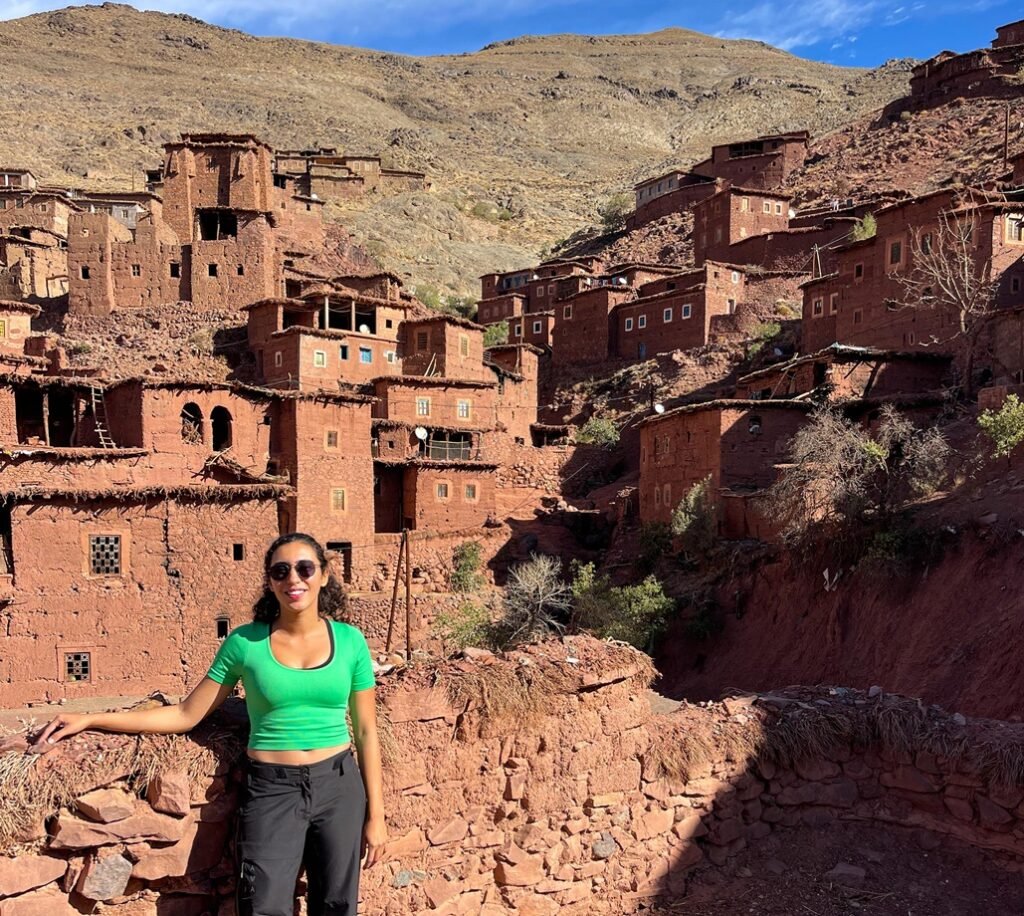
🏡 Accomodation inMegdaz
We stayed with locals. A warm and joyful family welcomed us with open arms. Now they open their home to the public to rent rooms with a unique experience staying with a local Amazigh family. Mohammed, the son of the family, was very welcoming and super interesting! He told us lots of anecdotes about the village and Amazigh culture. He was also our guide throughout the stay.
Mohammed: +212697277953
IG: @dar_megdaz
>Booking here.
Megdaz Granaries
There are more than seven Tghremt (ancestral Amazigh granaries) built by the seven families of the Ait Attik tribe who founded the village of Megdaz.
🔍The Amazigh people shared the same vision of traditional granaries or banks but with different forms. For example, in the south, the granaries were built high in the mountains like the Aoujgal Granaries. Whereas in Megdaz, the granaries take the form of a Kasbah (fortified house) protected by a fort wall. Amazigh granaries are places where food, gold jewelry, and anything of material value are stored in a safe and difficult-to-access place. This is the main objective of modern banks today.
💡Each tribe had its own Amazigh tattoo.
📜Each family in Megdaz had to build its own Kasbah (granary) to distinguish itself.
🏡The largest Kasbah is that of Ait Hesso, dating back more than 600 years, belonging to a person called Cheikh (Amghar). He was the main advisor of the village in matters of marriage and divorce, as well as a judge in disputes between individuals or families. He ruled on the people’s affairs without resorting to an external authority to the tribe.
🔦Tghremt Izaroren is said to be the first family of Megdaz, being there for over 800 years.
Tghremt Nayt Hma, Tghremt Ait Ijja, and Tghremt Ait Hssayen, are all big founding families still living in Megdaz.
🔑The Kasbah we visited (in the photo) is Ait Ija, and it is the most robust. Its architectural construction distinguishes it from all other Kasbahs.

Activities to do in Megdaz
Megdaz is an important stopover for trekking and mountain hiking.
📸 Here is an unnamed summit at the top of the Ikken waterfall at an altitude of 2970m. In the next post, I will talk about all the activities to do in Megdaz.

There are 3 waterfalls near Megdaz that should not be missed:
⚡️ The Iken waterfall (small waterfall) remains the most pleasant hike. Natural pools for swimming and very beautiful natural landscapes to discover on the way to the waterfall (2170m). The return can be made in a circle passing through the pretty village (douar) Emkis which is more of a place of transhumance higher up in the mountain called Al-Azib (it is a secondary place to which the locals from Megdaz go move seasonally in summer so as not to touch the grass and livestock feed in Megdaz and store it for the winter).
💥 The second waterfall is called Iroumin (Grande Cascade). The word Iroumin refers to any foreigner from our tribe, but the term refers to foreign tourists because this waterfall is known for their visit.
🌟 The third waterfall is Tislit Waterfall (Tislit means bride), and its name was given to it because of a legend we hear from our ancestors. Until today, young people go to this waterfall in the hope of fulfilling their wish to get married.
📞Our touristic guide:
Mohammed: +212697277953
IG: @dar_megdaz

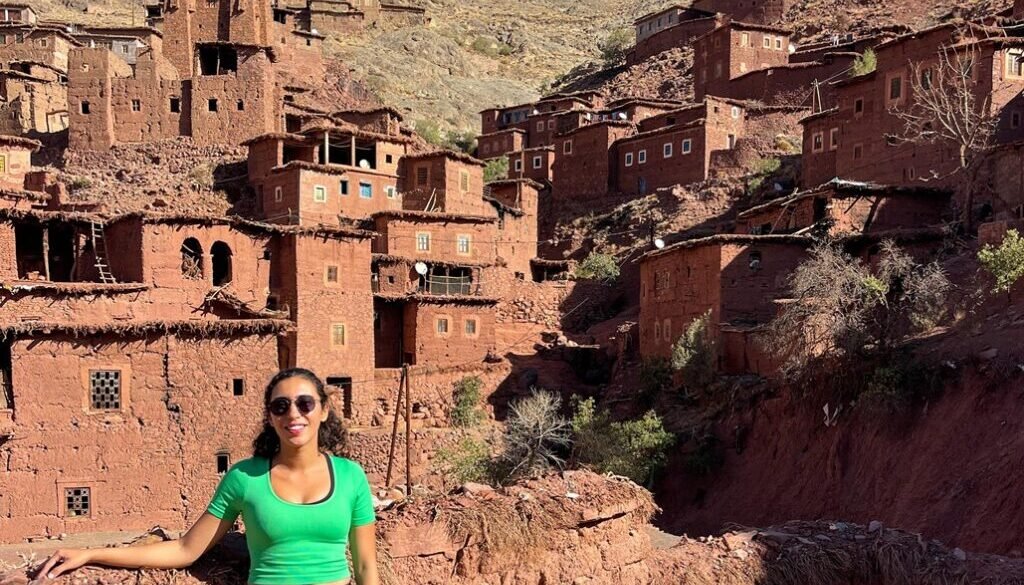
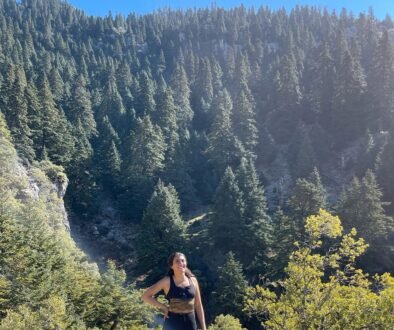
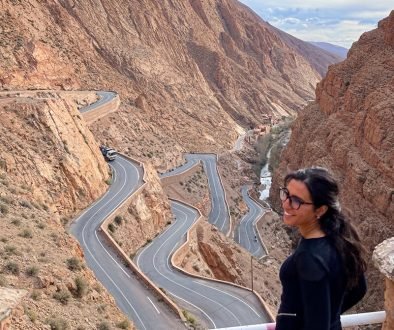
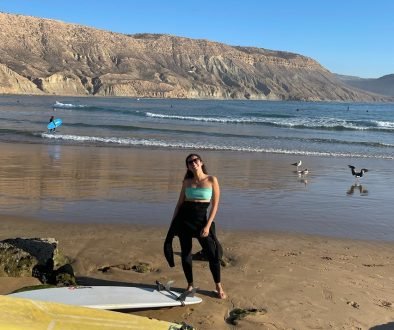
November 21, 2024 @ 1:20 pm
Elle est belle d’abord cette fille,si généreuse!Croyez-moi,et pas seulement,essayez s’il vous plaît de l’admirer en communion avec ces beaux paysages qu’elle vous offre gracieusement,qu’elle vous commente et décrit avec une largesse d’esprit incroyable,vous allez réellement être envahi(e), envoûté(e) sans relâche par la magie de cette » cantatrice des mille flammes » et vous considérer de surcroît comme un vrai marcheur entre ces rochers,cascades,paysages humains et animaliers,bref côtoyant la montagne et ses douceurs dans les plus belles régions de l atlas et de l’au-delà.
Personnellement ,je ne vous cache pas,j’avais ce ressenti que je partage avec vous en me laissant entraîner derrière cette charmeuse jeune fille,par son regard,sa voix off, et ses choix.Merci et mille mercis, Mademoiselle, mes respects et encouragements,vous êtes simplement magnifique.Bonne continuation.
December 5, 2024 @ 9:44 pm
Asalam,
I have just come across your page searching for where to go from Marrakus for 2 couples in Christmas-New Year period . I wanted to find something off the beaten track towards the dessert. I think your input about this area the most interesting for me so far. Also because you are Maroccan (an insider). It will be our first time in Marocco (and Africa). If you come to Poland/ Krakow you can contact us. Choukran, Maciek
February 15, 2025 @ 2:36 pm
Hello, I’m sorry about the late response. Just checked the comments. I hope you spent a lovely Chritsmas holiday in Morocco. Feel free to contact me in instagram.